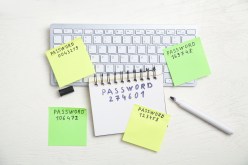Understanding the Basics of Cell Phone Tracking with IMEI
In today’s digital age, cell phones have become an integral part of our lives. They store sensitive information and are used for communication, work, and entertainment. However, with the increasing reliance on these devices, the need for cell phone tracking has also grown. One method used to track a cell phone is through its International Mobile Equipment Identity (IMEI) number. In this article, we will explore the basics of cell phone tracking using IMEI and how it can help in various scenarios.
What is IMEI?
Every mobile phone has a unique identification number called the IMEI. It stands for International Mobile Equipment Identity and is a 15-digit code that is assigned to each device by the manufacturer. The IMEI number serves as a vital identifier for mobile phones worldwide and cannot be changed or modified by users.
How Does Cell Phone Tracking with IMEI Work?
Cell phone tracking using IMEI involves utilizing this unique identifier to locate and monitor a device’s location. When a user’s phone is lost or stolen, they can report the incident to their service provider or law enforcement agency along with their IMEI number. The authorities can then use this information to track down the device.
The process starts by contacting the cellular network provider who can access their database to identify which cell tower or base station the device was last connected to. By triangulating signals between multiple towers, they can narrow down the location of the phone within a certain range.
Legal Considerations
It’s important to note that cell phone tracking using IMEI should only be done in legal situations and with proper authority. In most countries, only law enforcement agencies have access to such technology as it requires cooperation from service providers and adherence to privacy laws.
However, there are also legitimate cases where individuals may need to track their own phones or those of family members, such as in situations of theft or misplacement. In such instances, it is essential to follow the proper legal channels and seek assistance from law enforcement agencies.
Limitations of Cell Phone Tracking with IMEI
While cell phone tracking with IMEI can be an effective tool, it does have its limitations. One major limitation is that it requires the cooperation of service providers and access to their databases. If a phone’s SIM card is removed or replaced, tracking becomes nearly impossible as the IMEI number will no longer be connected to any specific cellular network.
Additionally, tracking a phone using IMEI may not always provide real-time location data. It relies on the last known connection to a cell tower or base station, which may not accurately reflect the current whereabouts of the device.
Conclusion
Cell phone tracking using IMEI can be a valuable tool in locating lost or stolen devices. By understanding how this technology works and its limitations, users can make informed decisions when reporting incidents to authorities or seeking assistance from service providers. However, it is crucial to remember that this method should only be used legally and with proper authorization.
This text was generated using a large language model, and select text has been reviewed and moderated for purposes such as readability.





